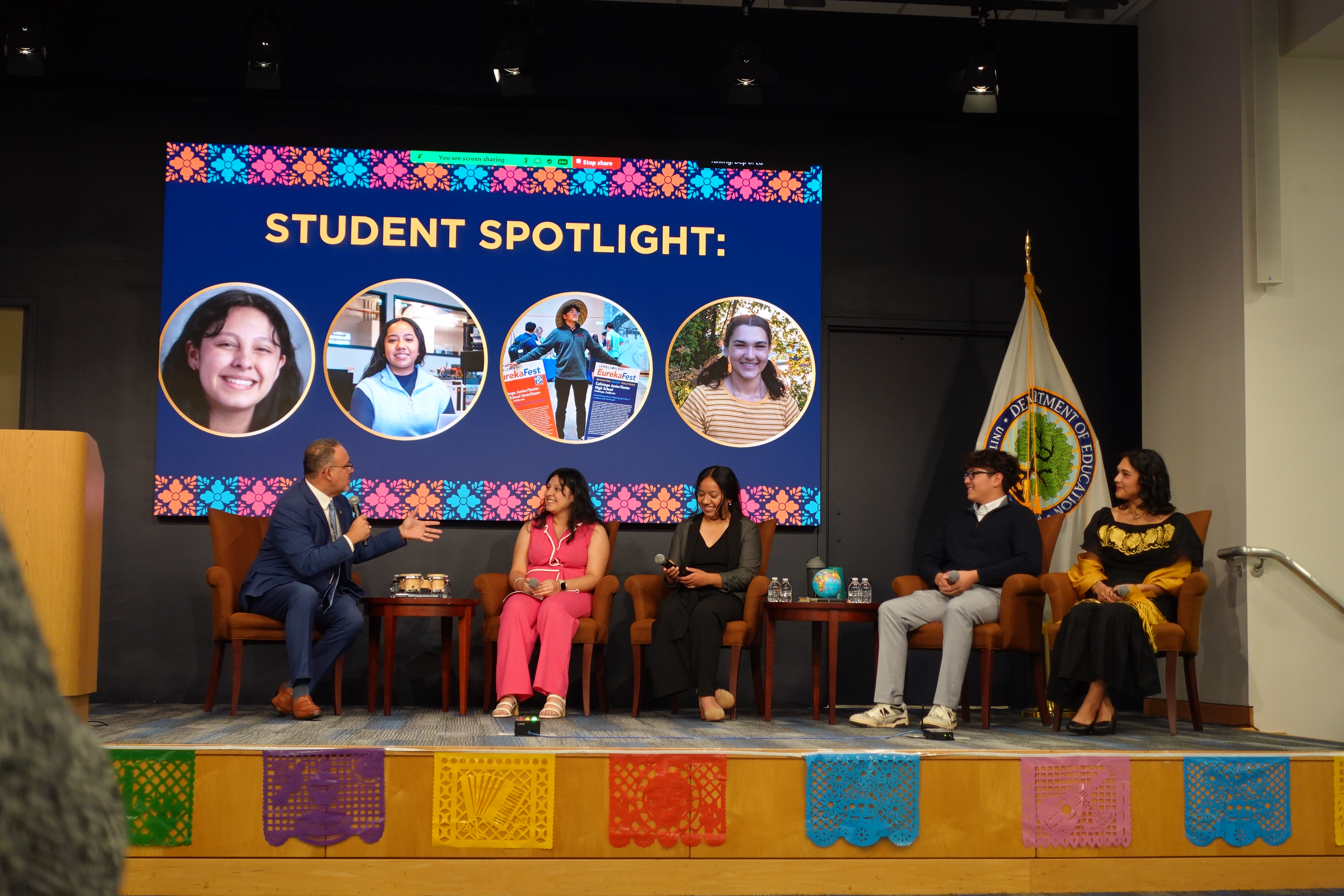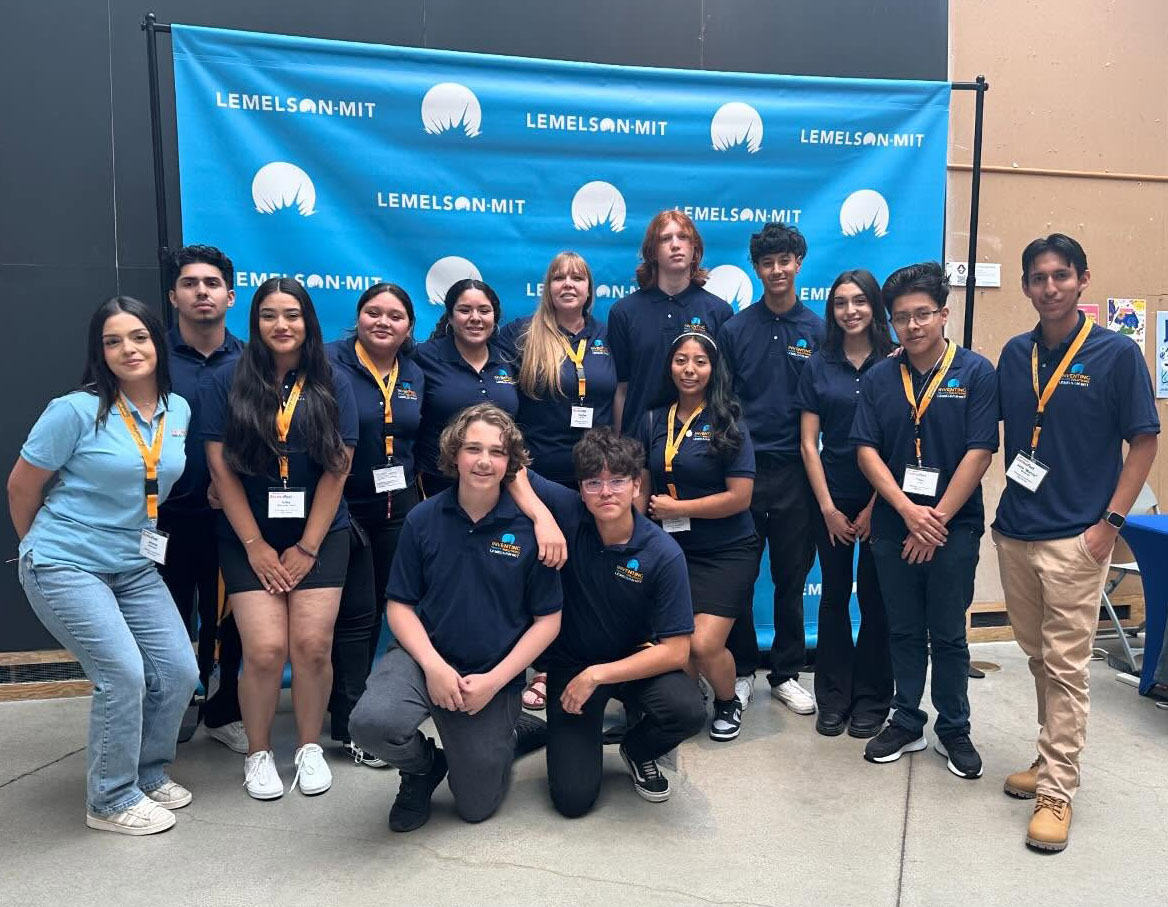Recognizing the Power of Invention Education for Re-Engaging Students
In 2022, high school science teacher Heather Brooks attended her first Lemelson-MIT (LMIT) Invention Education (IvE) webinar. She never imagined that just two years later, she would be accompanying 30 students to present their invention project at MIT, speaking on a panel at the U.S. Department of Education in Washington, D.C., or having her students’ project selected in 2025 as one of five finalists for the Student Innovation category at SXSW’s Innovation Awards in Austin, Texas.

Brooks teaches at Calistoga Junior/Senior High School in California. Despite its reputation as an affluent wine-country destination, many students in Calistoga’s public schools are the children of agricultural workers and do not share in the region’s wealth or opportunities.
Attending the LMIT webinar in 2022 encouraged Brooks to participate in LMIT’s professional development workshop at MIT that June. Recognizing the immense value IvE could bring to her students, she gathered a team of fellow educators in her district. With the support of their administration, they joined LMIT’s Partners in Invention Education (PiE) program and received support for implementing an invention education program at both the middle and high school levels.
Students’ response to IvE was remarkable. Many, despite being bright, were initially hesitant to participate in school projects. Working in teams to address community needs via the invention process proved to be an engaging and empowering experience. Brooks shared the story of one student who had been in the country for only six years and was still learning English. He emerged as the lead engineer for his team’s project.
“The power and knowledge he gained through IvE was remarkable. It’s literally pulling him out of the poverty cycle,” she said. “He was able to integrate skills from all academic areas, including English and math, to bring the project to life.”
Invention Education: Changing the Trajectory of Students’ Lives
Inspired by her students’ enthusiasm, Brooks applied for an LMIT InvenTeam high school grant in 2023. This prestigious program, running for more than 20 years, provides student teams with a $7,500 grant to experience invention and cultivate creativity, along with year-long support from LMIT and other resources. Brooks’ preparatory work with LMIT helped her submit a strong application, and she was awarded an InvenTeam grant for the 2023-24 school year.
The first step for the Calistoga InvenTeam was identifying a community problem to solve. Given the devastating wildfires that had struck

Napa Valley in recent years, the team chose to address how to keep firefighters cool while battling blazes. Through interviews with firefighters, police, and family center representatives, they discovered that 42% of line-of-duty firefighter deaths are related to overexertion and heat stress. Recognizing this urgent need, the students set out to develop a cooling device tailored for wildland firefighters who wear up to 40 pounds of personal protective gear for extended periods.
Meanwhile, Brooks also piloted LMIT’s Inventing Smart Solutions (ISS) curriculum with another group of students. Because many of these students were children of agricultural workers, they quickly realized the invention could be adapted to also help field laborers stay cool, and they developed a second prototype to address this challenge.
The teams collaborated, with the aim working toward a shared goal. They were divided into specialized groups focusing on research, technology, finance, and communications, learning to respect and appreciate each other’s strengths. “You see students crossing social barriers and forming strong peer-to-peer bonds,” Brooks observed.
To ensure their invention was unique, students conducted patent research with pro bono assistance from Microsoft’s MakeWhatsNext program and Akona IP. A 14-year-old ninth grader took the lead in drafting the 25-page patent document, including detailed CAD drawings. Brooks was astonished by the students’ capabilities: “In a traditional school setting, they don’t always get the chance to show what they can do. I was blown away by their power and creativity.” The team received a provisional patent from the U.S. Patent and Trademark Office in Spring 2024.
Community Support and National Recognition Through IvE
The project garnered widespread community support to fund travel for nearly 40 students and adults to Boston for EurekaFest, the culminating event for InvenTeams and teams implementing LMIT’s ISS capstone course curriculum. The team organized fundraisers with the help of a local PR firm. They raised more than $200,000 through contributions from families, local businesses, the Rotary Club, and other supporters. “We never imagined the community would step up in such a big way,” Brooks said. “Everyone was rooting for these kids.”
In June 2024, the Calistoga InvenTeam and ISS team presented their inventions at EurekaFest at MIT, showcasing their work to educators, visitors from The Lemelson Foundation, members of the MIT and Cambridge/Boston communities, and others. The journey didn’t stop there. In August 2024, the students were invited to California’s State Capitol to share their work with elected officials championing legislation for designating October as IP Awareness Month. This experience deepened their understanding of the political system and gave them a chance to share the power and promise of IvE with policymakers. Soon after, the Michelson Institute for Intellectual Property invited them to share their IvE experiences in a national webinar.
Their success caught the attention of Melody Gonzales, Executive Director of the White House Initiative for Hispanics through a conversation with Dr. Cristina Sáenz, Invention Education Manager at LMIT. Gonzales invited Calistoga student Elias Escobar, along with two former InvenTeam students, Katia Avila and Lesley Rojas, to participate in the “Spotlight on Latino Student Innovators & Aspiring STEM Leaders” panel, hosted by U.S. Secretary of Education Miguel Cardona during Hispanic Heritage Month.

Encouraged by their progress, the team submitted their invention — now named the “Smart Wearable Thermoregulatory Device” — to the SXSW Innovation Awards. They were selected as one of five finalists in the Student Innovation category and traveled to Austin in March 2025 to present their work. While they did not win the competition, the experience left a lasting impact on them.
Beyond the Classroom: A Transformative Experience
Brooks credits IvE with transforming her students into active learners who see the real-world applications of their academic studies. “The entire atmosphere in my classroom has changed,” she said. “Students now understand why education matters. IvE has broken down barriers by taking academics and making them tangible.”
These students are no longer just learners — they are inventors, problem solvers, and future leaders. As Brooks puts it, “One of the best things about invention education is that it’s so life-changing for these kids.”

Click here to learn more about LMIT's
Summer Professional Development Workshops.


